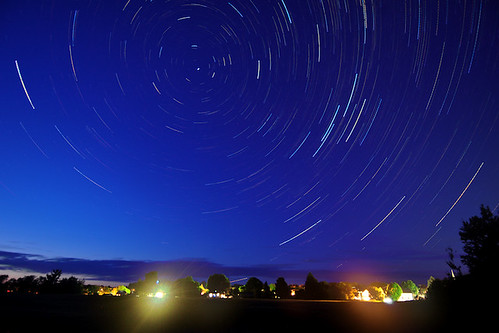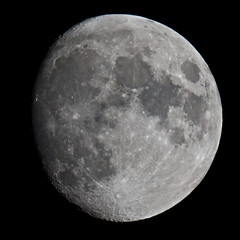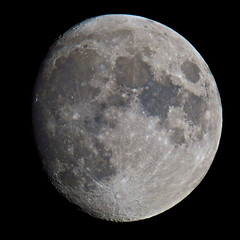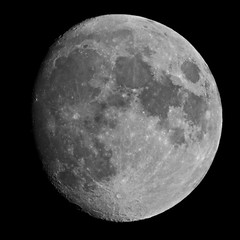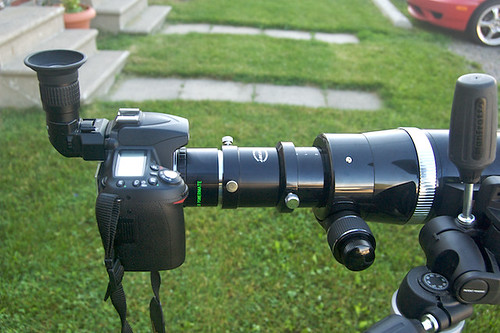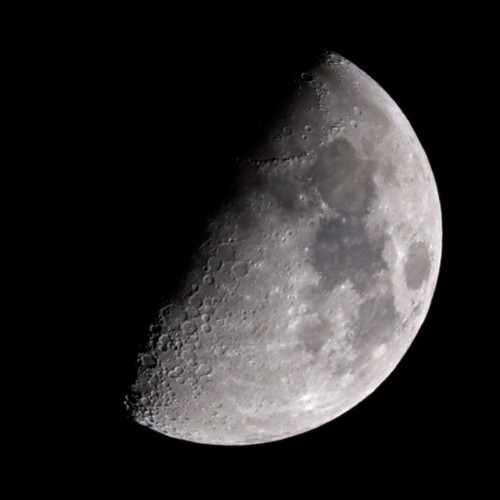The skies were finally clear enough for astronomy last night, but with the Moon almost full, it was too bright to do any observing or tripod-based astrophotography of anything but the Moon (or Jupiter, which was up later, but by then the skies were hazy). So I photographed the Moon again. But this time I tried a few new things with my lunar photos.
For one thing, I increased the image’s sharpness. This is apparently considered essential in lunar photography: it really draws out the Moon’s topography. In Photoshop the tool to use would be Unsharp Mask, and when I was farting around in Photoshop CS4 yesterday (the way I learn things), I tried this out on some of my old lunar photos. But in the end I made use of the Definition slider in Aperture, which achieves similar results. The final image (top right), with Definition set to maximum, is indeed a good deal sharper than the original, without too much contrast or too many artifacts.
Once work on that photo was complete, I produced two variants, each of which with only one setting changed. In the second image (middle right), I pumped up the saturation — or rather, I maxed out the Vibrancy slider in Aperture. Vibrancy has been described as Aperture’s “smart saturation.” The end result is similar to my photo of March 9 (which also made use of Vibrancy), enhancing the Moon’s subtle colours.
The drawback is that colour fringing is also enhanced (see the north-to-northeast edge of the Moon), an effect of shooting through a refractor rather than a reflector. My apochromatic refractor is a great telescope, but it’s still an inexpensive doublet (it cost me $680 last fall, but the price has since gone up and it now runs around $830 Canadian; Orion’s EON 80mm ED is the same scope). When dealing with a bright object like the Moon, there’s going to be a touch of chromatic aberration. If I want none at all, I’m going to have to shell out serious coin for a much more expensive refractor, or shoot through a reflector or catadioptric telescope.
is the same scope). When dealing with a bright object like the Moon, there’s going to be a touch of chromatic aberration. If I want none at all, I’m going to have to shell out serious coin for a much more expensive refractor, or shoot through a reflector or catadioptric telescope.
But I digress. The third image (bottom right) gets around the chromatic aberration by going monochrome — using only the red channel. Refractors’ chromatic aberration occurs because different colours have different focal points; since blue is the colour that has trouble reaching focus, going to just the red channel should get the sharpest image possible, I think. Besides, I like using single colour channels for black and white photography: it yields interesting results.
(You’ll have to click through to get a better look at these images; you won’t be able to tell very much from these thumbnails.)






